
They'll put wax on anything at that distillery.

The draft selections are the usual. I chose a Sam Adams. Daniella, the bartender, scrunches up her pretty face. "The Sam Adams is kinda messed up." Messed up? "Mm-mm." The lager's specific malady is not elaborated upon. OK. How about a Stella? Daniella moves briefly as if to draw a glass, but then stops and scrunches up her face. The Stella is messed up, too? "Mm-mm." I look at the remaining beers on tap, unsure as to whether any of them are in good health. "You do Bass?" asks Daniella. She is wearing black vinyl pants and a black halter top with a ring of silver spangles circling the bust line. She's nice, but no-nonsense. Bass, huh? Ugh. Well, if I have to, I could do Bass. I do Bass.
Kevin Barry's Bar & Grill of downtown Brooklyn is a lot like that: Rough around the edges, a little sketchy and doing the best that it can. The bar is shaped like an extended L-shaped alley, with entrances on both Lawrence and Willoughby—a good configuration if you're looking to dodge someone. Pink lights on red walls make you feel like you're in the Champagne room at some nightclub no matter where you walk. (The bar's name in some listings is actually Kevin Barry's 140 Club.) The place's handle—it's named after the Irish Republican teenage martyr who was executed in 1920—and the very Irish pub facade notwithstanding, the vibe is far from a slice of old Killarney.
A group of men holding down a corner of the long bar chew over the merits of the teams going into the World Series. Some of them might be judges for the "So You Think You Can Sing?" talent content that had been scheduled to begin at 4 PM. But no one's singing, and it doesn't look like anyone will be. A good friend of Daniella's comes in with his sister and her boyfriend. The friend looks beat, like he's just come off working 12 hours straight at a crummy job he hates. Daniella's concerned. Then, she remembers: her son's selling candy bars for a school fund raiser. She hauls out the box of chocolate. People eye is greedily, but no one's buying.
KISS-FM is hosting the talent contest, and one of the radio's staff members comes over for a splash of cranberry in her vodka and pineapple juice. She drinks and declares the cocktail much improved. An old lady in a red beret, carrying a sign sealed in protective plastic peers through the window uncertainly before entering by the Willoughby side. A manager springs into action. "No, no, no, no, no, no, no" he says in a gentle, but insistent tone. The woman quietly turns around and exits. A man at the bar mentions the time he gave a beggar some money, then saw him the next week in a fancy car. The manager and man nod at this story, knowingly.
Kevin Barry's evidently draws a healthy lunch crowds most work days; the dinner hour looks to be more sparsely patronized. Like most bars in the city, the saloon is having a Halloween bash tonight and tomorrow night. Doors open at 6 PM and close at 4 PM. 25 or older ID necessary. "We deserve the right to be selective," notes a postcard. There's a DJ booth and enough floor space to dance; the place is made for music; might be fun. After all, at what other bar can you buy jumbo chocolate bars?
—Robert Simonson
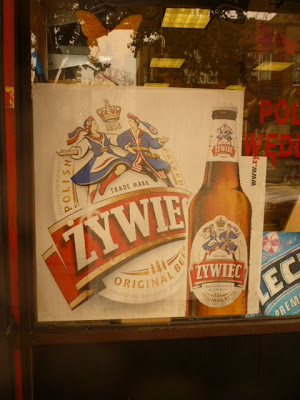


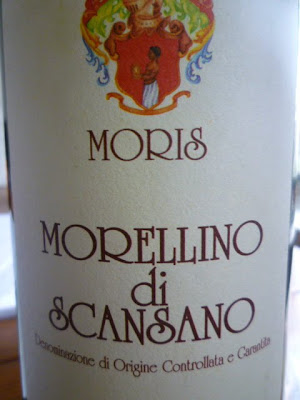
"After a long night in the city that never sleeps, many New Yorkers turn to the ultimate Sunday morning cure-all: The Bloody Mary. While the origins of its name are unclear, there is no disputing that this popular culture here at the St. Regis Hotel. And to on this day, the City of New York is proud to join this landmark institution in celebrating the 75th anniversary the birth of the Bloody Mary.
"Bartender Fernand Petiot invented the drink when he was working at the upscale King Cole Bar in the St. Regis New York. The original recipe he uses while working in Paris contained vodka and tomato juice. But on a fateful day in 1934, Petiot spiced up his drink with salt, pepper, lemon juice and Worcestershire sauce. The rest, as they say, is history, and the drink quickly became the signature cocktail of the King Cole Bar. Christened the Red Snapper (since Bloody Mary seemed too vulgar for the clientele at the time) it has become a mainstay on the menus of restaurants and bars throughout the five boroughs and far beyond.....
"I am proud to joing the St. Regis New York, the King Cole Bar, and countless New Yorkers in raising a highball glass to this iconic cocktail. Cheer!"

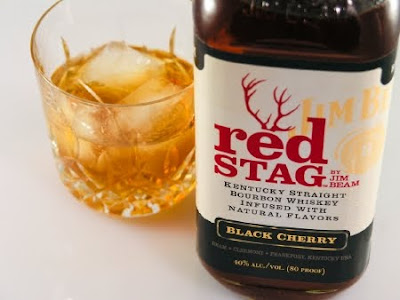


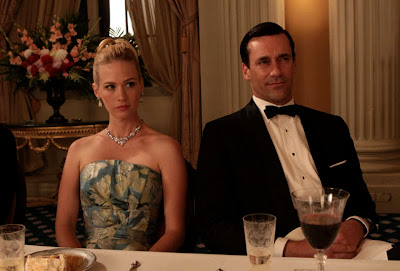

Limerick House—this Chelsea tavern's name despite the big sign saying just Limerick's outside—is a friendly bar situated on W. 23rd Street, just steps from the F train, a good place for a quick one before heading off to wherever you're heading. Nobody seems to pay much attention to it despite the fact that it's just off a hugely busy intersection. Its anonymity may have something to do with the dark, rather severe two-story brick facade, which belies the rather narrow and cozy space inside. It kind of disappears before your eyes. Take away the neon beer signs and it would look as drab and bunker-like as a labor union's headquarters.
Inside, the back bar looks 50 years old if it's a day. There's plastic over the tables. The many mirrored beer signs are covered with Halloween cobwebs. A sign says there's a $5 charge for whining. The second floor is occupied by a private party room which, as is the case with many of these Irish pubs, looks forlorn and far less inviting than the bar room proper.
Mikey, the old bartender, has the mussed gray hair of a man who just came in out of a gale and a whinnying Irish accent that sounds like it's about to break into song. The language most often spoken by the staff, however, seems to be Spanish. That includes a vivacious Venezuelan waitress who is obviously popular with the male workers. She wasn't on duty one recent night but was sitting at the bar anyway, with her visiting sister, because "I drink for free." And what she drinks is rum and coke. "I'm from Venezuela. I drink rum." What she eats is arepas, which she makes from scratch at home in Astoria. She speaks perfect, and rapid, English—the result of a year abroad in England and summers spent at English camps in Minnesota. In the U.S. for two years, she still brims with enthusiasm for the city and its possibilities. Like every other barmaid in New York, she wants to be an actress. Musical comedy, specifically. She just graduated from Stella Adler. The call of Broadway resounds all the way down to South America.
How was business last night, she asked Mikey. Busy. The Masons from the century-old hall next door came by after their weekly Tuesday meeting. They are regulars. The waitress is upset. "Aw, I lost money." Masons, we are informed, tip big.
—Robert Simonson


G y T’s
Murcielago
Beefeater 24, amontillado sherry, lemon, sugar, Q tonic.
Sea Monkey
Plymouth gin, celery/apple juice, lemon, Anise del Mono, Fever Tree tonic water, fennel salt
Tomas el Gato
Hayman’s Old Tom gin, Averna, strawberries, lime BC house tonic.
El Prado
Tanqueray #10, pineapple syrup, mint, Valencia orange, BC house tonic
Salvador’s Watch
Beefeater gin, muddled grapefruit, Pacharan, Bitter Kas

Pumpkin Pie Martini – Stoli Vanilla Vodka, Liquor 43, Pumpkin Puree and a splash of Bailey’s are vigorously shaken and poured into a chilled martini glass with a Graham Cracker Crust rim
Apple-Sage Martini – Apple Vodka and sour mix are added to muddled sage leaves and limes, shaken and poured into a chilled martini glass, garnished with a sugar rim and topped with an apple slice
Carrot-Ginger Martini – Stoli Vodka, spiced rum, a splash of Stoli Vanilla and carrot juice are shaken and poured into a chilled martini glass and topped with Ginger Beer
Crantini – Kettle One Vodka, Cranberry and Lime juices and a splash of simple syrup are mixed and poured into a chilled martini glass and garnished with fresh cranberries




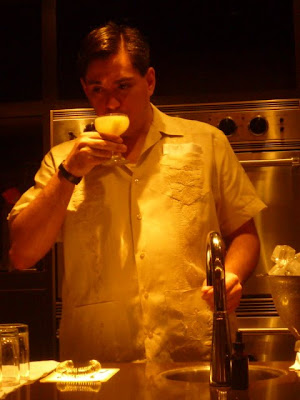

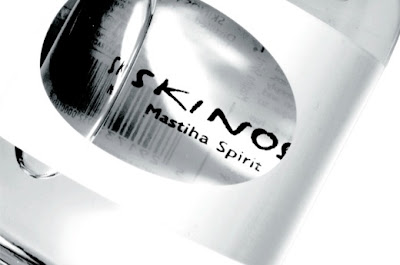


Alex Day, Death & Co., NYC
Amanda Gager, Mandalay Bay Hotel/StripSteak, Las Vegas
Andrew Friedman, Liberty Bar, Seattle
Angus Winchester, Alconomics, London
Brian Matthys, Izakaya Ten, NYC
Brian Miller, Death & Co, NYC
Chris Bostick, The Varnish, LA
Charles Steadman, The Breakers, Palm Beach, FL
Chris Johnson, Bao 111, NYC
Christian Sanders, Prime Italian, Miami Beach, FL
Colin Appiah, NYC
Damon Dyer, Flatiron Lounge, NYC
Don Lee, Momofuku, NYC
Enzo Lim, The Standard, NYC
Gerry Corcoran, PDT, NYC
Giuseppe Gonzalez, Dutch Kills, NYC
Hillary Choo, Plunge at the Gansevoort South, Miami Beach
Jackie Patterson, Heaven's Dog, SF
Jackson Cannon, Eastern Standard, Boston
Jeremy Thompson, The Raines Law Room, NYC
Jim Meehan, PDT, NYC
Joaquin Simo, Death & Co., NYC
Joel Baker, Bourbon & Branch, SF
John Myers, The Grill Room, Portland, ME
John Deragon, PDT, NYC
Katie Stipe, Mayahuel, NYC
Kenta Goto, Pegu Club, NYC
Kevin Diedrich, Clover Club, NYC
Laura Cullen, Clark’s, Miami Beach
Leo Robitschek, Eleven Madison Park, NYC
Marshall Altier, Crosby Bar at Crosby Street Hotel, NYC
Michael Madrusan, Little Branch, NYC
Naren Young, Bobo, NYC
Neyah White, NOPA, SF
Phil Ward, Mayahuel, NYC
Rhiannon Enlil, Cure, New Orleans
Richie Boccato, Dutch Kills, NYC
Ryan Fitzgerald, Baretta, SF
Ryan Maybee, Manifesto, Kansas City, MO
Sean Kenyon, Steuben’s, Denver, CO
Tad Carducci, Tippling Bros. NYC
Todd Appel, Crimson Lounge-Hotel Sax, Chicago
Tom Schlesinger-Guidelli, Craigie on Main, Cambridge, MA
Tonia Guffey, Prana, NYC
The following distaff members of the bar trade will step behind the bar until 1:30 PM on Saturday:
Charlotte Voisey
Julie Reiner
Elayne Duke
Katie Darling
Lisa Hare
Lynette Marrero
Vanessa Polk
Meaghan Dorman
Erin Williams
Eryn Reece
Franky Marshall
These folks, involved in other aspects of the convention, are also expected to mix a drink or two:
Aisha Sharpe, Contemporary Cocktails, NYC
Andy Seymour, aka wine geek, NYC
Willy Shine, Contemporary Cocktails, NYC
Steve Olson, aka wine geek, NYC
Tim Cooper, Contemporary Cocktails, NYC
Leo DeGroff, aka wine geek, NYC
Brent Lamberti, Contemporary Cocktails
Ben Clemons, 33 Libations, NYC
Carlos Yturria, San Francisco
Danny Valdez, New Orleans
Eric Alperin, The Varnish, LA
Jacques Bezuidenhout, San Francisco
John Lermayer, Morgan Hotel Group, Miami
Jon Santer, San Francisco
Jeff Grdinich, New Hampshire
Misty Kalkofen, Drink, Boston
Ricky Gomez, Cure, New Orleans
Matty Eggleston, The Milk of Paradise Spirits Co., LA
